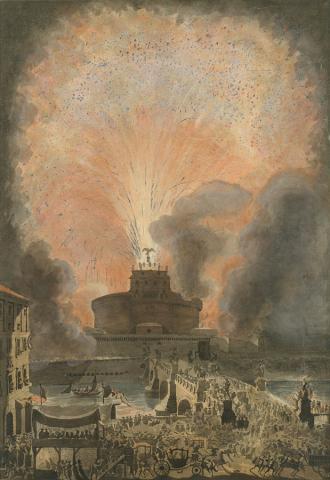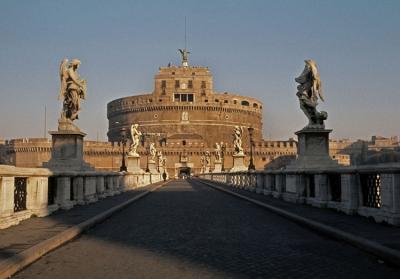
1783

1975
The next night—Easter Monday—there was a great display of fireworks from the Castle of St. Angelo. We hired a room in an opposite house, and made our way, to our places, in good time, through a dense mob of people choking up the square in front, and all the avenues leading to it; and so loading the bridge by which the castle is approached, that it seemed ready to sink into the rapid Tiber below. There are statues on this bridge (execrable works), and, among them, great vessels full of burning tow were placed: glaring strangely on the faces of the crowd, and not less strangely on the stone counterfeits above them. The show began with a tremendous discharge of cannon; and then, for twenty minutes or half an hour, the whole castle was one incessant sheet of fire, and labyrinth of blazing wheels of every colour, size, and speed: while rockets streamed into the sky, not by ones or twos, or scores, but hundreds at a time. The concluding burst—the Girandola—was like the blowing up into the air of the whole massive castle, without smoke or dust.
—Charles Dickens, Pictures from Italy, 407
Fireworks displays were staged on the papal fortress of Castel Sant’Angelo as early as the fifteenth century, and by the 1780s they assumed an almost ritual quality. Desprez employed the hybrid medium of hand-colored prints to exploit the dramatic effects of pyrotechnic light and color. The artist, who later served as stage designer at the court of Gustav III of Sweden, presented the Girandola as a grand scenographic performance. He included the animated crowd of onlookers, some of whom have climbed up on the pedestals of Bernini’s angels on the bridge in order to obtain a better view
Louis-Jean Desprez, The Girandola at Castel Sant’Angelo, ca. 1783–84. The Metropolitan Museum of Art.
Location photography by John Pinto
